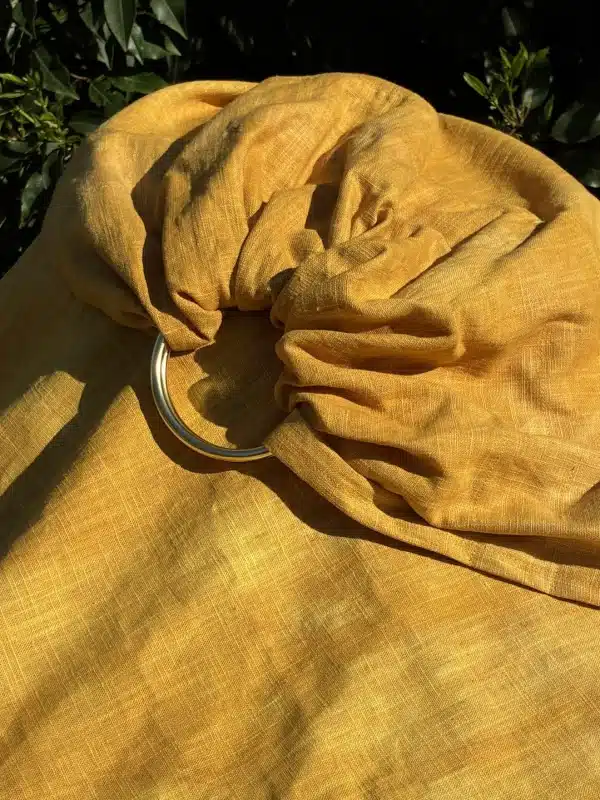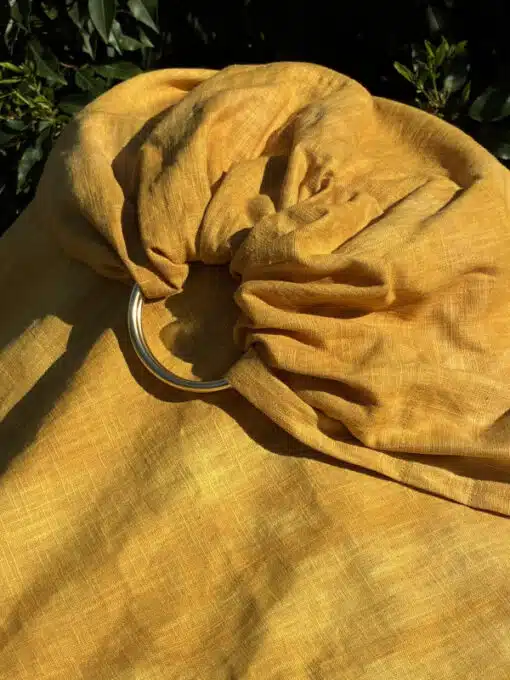Babywearing News, Bonding, Fabrics, Nachteile des tragens, Stillen im Ring Sling und Baby Tragetuch
The most common babywearing mistakes – and how slings can help you avoid them
Estimated reading time: 5 minutes
Tied too loosely, incorrect M-position, covered face – common babywearing mistakes happen quickly. Many carriers offer little room for adjustment. A baby wrap, however, adapts individually to you and your baby. You decide on position, tightness, and posture – no buckles, no stiff structure. With a bit of practice, wrapping becomes an intuitive routine that promotes closeness, security, and healthy development. Babywearing should feel good – for both of you.
Table of ContentWhen Babywearing Becomes Stressful – What’s the Reason?

Wearing your baby can be such a beautiful way to create closeness, provide comfort, and enjoy hands-free freedom in everyday life. But especially for first-time parents, it can quickly turn into stress or frustration. And that’s understandable – not every baby carrier is intuitive, and mistakes can happen without even realizing it.
Hemp Fabric
Hemp Fabric
Cotton Fabric
Hemp Fabric
No worries though – most of these issues are easy to avoid. And that’s exactly where a baby wrap becomes your gentle, body-friendly, and flexible solution. A great way to support your baby safely and mindfully from day one.
The Most Common Babywearing Mistakes

1. Incorrect M-position
The most important babywearing posture is the so-called M-position: knees slightly higher than the bottom, legs spread, back gently rounded. This posture supports healthy hip development – especially during the first months of life.
Mistake: Many carriers don’t provide this position automatically – especially if not properly adjusted. Legs may dangle, and the back may be overextended due to tight straps.
How does a wrap help?
With a baby wrap, you position your baby down to the millimeter. You support the back, bottom, and legs exactly where needed – at every developmental stage.
2. Face and airways not free
Your baby’s face should always be visible and uncovered. No fabric should press against the nose or mouth, and nothing should block easy breathing.
Mistake: In some carriers, babies sink too deep into the seat or the fabric slips too close to the face. Especially for newborns, this can lead to risky positions – often unnoticed.
How does a wrap help?
You always have control over where the face is, how the head is supported, and whether there’s enough room to breathe.
Linen Fabric
Hemp Fabric
Cotton Fabric
Linen Fabric
3. Too loose or too tight
Mistake: Especially with buckle carriers, readjusting can be confusing. One strap too tight, another too loose – and you’re not sure where to even begin.
How does a wrap help?
You tighten section by section directly against your body. That gives you precise, even tension – snug but not restrictive, and stable without slipping.
4. Pain for the wearer
Mistake: Many parents complain about backaches, neck strain, or sore shoulders after babywearing. Almost always, this comes down to poor weight distribution.
How does a wrap help?
A wrap adjusts to you. You decide how to route the fabric – and can spread the weight evenly across your back and shoulders, which makes a big difference.
5. Not adapted to the weather – especially in summer
Mistake: Structured carriers are often made from multiple layers of polyester or thick cotton – not breathable, with padding that traps heat.
How does a wrap help?
Wraps made of linen, hemp, Tencel, or lightweight cotton are true summer heroes. You can use single-layer carries that let air flow while still feeling secure.
Wrap It Up – Flexible, Safe, Natural

Babywearing should feel right – for you and your little one. Most common mistakes come from rigid systems that don’t leave room for adjustment. And that’s exactly where a baby wrap shines: It adapts to your body – not the other way around. You’re in charge of how your baby is carried – not the gear.
Sure, wrapping takes a little practice in the beginning. But those first few minutes of learning give you weeks and months of true closeness, healthy posture, and deep connection.
A baby wrap isn’t a downgrade from modern carriers. It’s a whole different approach – one that follows your body’s flow. And naturally avoids many of the most common babywearing pitfalls along the way.





























